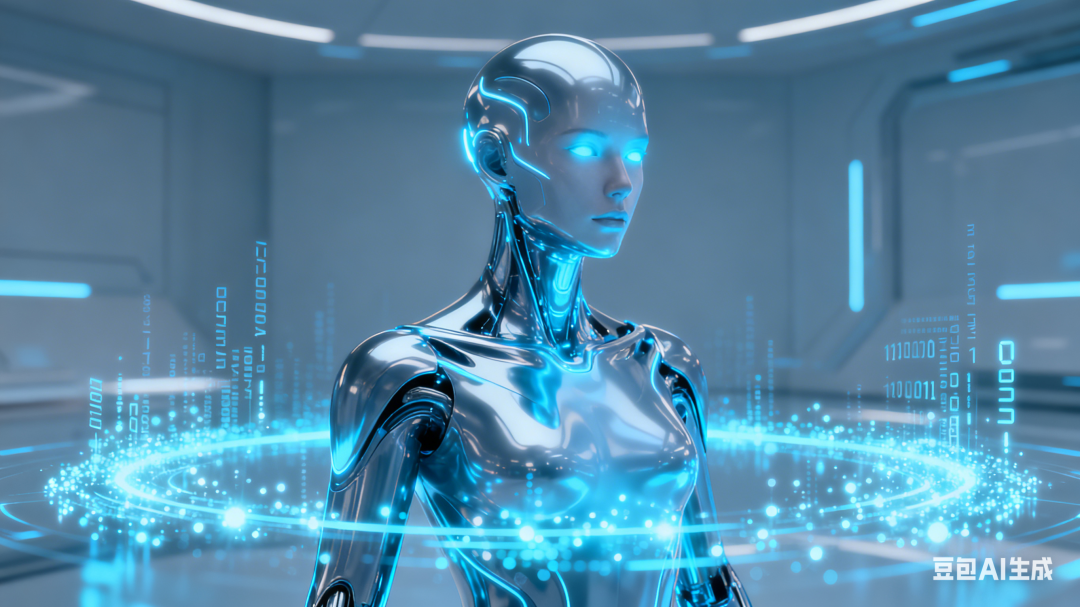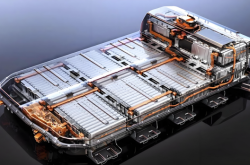AI Bubble Talk Intensifies: Why the AI Agent Boom Is Taking Place Now
![]() 11/27 2025
11/27 2025
![]() 457
457


The Dawn of AI Agent Commercialization / AI-Generated Images
Manual Labor / Edited by Wage / Produced by Uncle Jiao / Unicorn Observer
In the 2025 AI industry landscape, a paradoxical “double act” is playing out. On one hand, global tech stocks are experiencing volatile corrections. The Hang Seng Tech Index has seen a maximum two-month retracement exceeding 15%, while leading stocks like NVIDIA have been on a “high-open, low-close” rollercoaster ride, sparking discussions about an “AI bubble burst.”
On the other hand, the AI agent sector is experiencing a counter-trend explosion. China's AI agent market has surged from 4.75 billion yuan in 2024 to 7.84 billion yuan, marking a growth rate exceeding 60%. Tech giants such as Baidu, Tencent, and Microsoft, along with international players, are placing their bets, with a exponential rise in implementation cases across healthcare, industry, finance, and other sectors.
While skeptics dismiss AI agents as “repackaged bubbles,” real-world industrial transformations offer answers. 2025 marks not a year of AI bubble excess but the dawn of commercialization, where AI agents are transitioning from concepts to value realization.
01 From 'Conversational Tools' to 'Action-Oriented Entities'
AI agents are recognized as software programs capable of autonomously understanding, planning, and executing complex tasks. Powered by large language models (LLMs), they can independently invoke tools and systems to achieve high-level goals without the need for step-by-step human guidance.
This fundamentally differs from traditional AI assistants. When asked “how to analyze industry financial reports,” a traditional AI assistant might provide methods. In contrast, an AI agent autonomously crawls data, cross-verifies information, and generates structured research reports, requiring only final review from humans.
The emergence of AI agents is not accidental but an inevitable result of AI technological evolution.
The advent of ChatGPT in 2022 initiated the era of large models. However, early iterations remained stuck in “conversational demonstration” phases, criticized as “talk-the-talk AI” that lacked practical application.
Breakthroughs in Chain-of-Thought (CoT) training, Retrieval-Augmented Generation (RAG), and other techniques enabled large models to transition from mere “language understanding” to “logical reasoning.” Mature function-calling capabilities equipped them with the ability to perform tasks, enabling software operation and data invocation. Multimodal fusion further allowed agents to “see” images and “hear” speech, forming a complete “perception-thinking-decision-execution” loop.
By 2025, large models like GPT-4 and Gemini 2.0 have achieved transformative evolution, propelling AI agents from laboratories to industrial applications.
The core value of this evolution lies in transforming intelligence from a “cost” into “productivity.”
At the 2025 Baidu World Conference, Baidu founder Robin Li made a straightforward assertion: “When AI capabilities are internalized as native abilities, intelligence ceases to be a cost and becomes productivity.”
IBM Greater China Chief Technology Officer Zhai Feng envisions AI agents as “enablers” and collaborators in human-led intensive workflows. Low-value, repetitive tasks will be automated, while human potential in strategic planning and creative innovation will be further unleashed.
Bairong Technology founder and CEO Zhang Shaofeng challenges the traditional perception of “AI as a tool,” proposing the concept of a “silicon-based workforce.” He advocates treating AI agents as “silicon employees” for enterprises rather than “one-time software purchases.”
Gartner predicts that the proportion of enterprise software integrating autonomous AI will leap from under 1% in 2024 to 33% by 2028, while over 15% of daily work decisions will be autonomously completed by AI agents.
02 Tech Giants' Strategic Bets and Sector Explosion
The 2025 AI agent boom originates from strategic bets and resource investments by global tech giants. These investments are far from blind following; they are based on clear expectations of commercial returns, forming a positive “research-implementation-profitability” cycle.
At Baidu's November 2025 World Conference, the company unveiled a groundbreaking achievement—the world's first commercially viable self-evolving superintelligent agent, “Baidu Famous Strategy.” Drawing inspiration from evolutionary algorithms, it compresses billions of years of biological evolution into days, seeking “globally optimal solutions never discovered by humans” in transportation, energy, finance, and other fields.
Tencent leverages its WeChat ecosystem to build AI agent moats. CEO Martin Lau explicitly states that WeChat will eventually launch AI agents to help its 1.4 billion monthly active users complete tasks within the ecosystem.
Overseas giants are equally active. Microsoft integrates agents into Dynamics 365, helping Lumen cut annual costs by $50 million. OpenAI's ChatGPT Agent, launched six months prior, has reached 500 million users, automating web browsing, document operations, and multi-step tasks.
In vertical sectors, the commercial value of AI agents has fully bloomed, becoming “must-haves” for cost reduction and efficiency gains.
In healthcare, U.S. AI firm Ambience Healthcare has launched an AI-driven clinical assistance system composed of six functional modules. It reconstructs medical documentation workflows, with pilot data showing that doctors' weekly documentation time drops from 20 to 8 hours, satisfaction rises by 65%, report generation efficiency increases 8-fold, referral and discharge summary processes accelerate by 70%, and daily hospital consultations increase by 22%.
In retail, Walmart's 2025 “role-driven AI agent system” transforms from traditional retail to a “data-driven intelligent platform.” An agentized closed loop spanning product selection, inventory, sales, and after-sales reduces single-store operating costs by 22% and boosts customer repurchase rates by 15%.
In finance, Bairong Technology collaborates with a consumer finance institution to develop a “silicon employee” focused on post-loan voice quality inspection. As the AI technical supporter, Bairong provides its “Bairong Baigong” intelligent agent construction platform and large model technology as the “brain” and “skeleton” for the “silicon employee,” reducing manual quality inspection costs by 60% and overall post-loan operational efficiency by over 40%.
The enterprise market has become the primary battleground for AI agents. Haibi Research predicts that China's AI agent application market will reach 10.9 billion yuan in 2025 and surpass 100 billion yuan by 2027, with finance, manufacturing, and software/internet as the top three application sectors.
03 Ecosystem Resonance Behind the Boom
The AI agent explosion amid AI bubble controversies stems from the resonance of technological maturity, demand upgrades, and ecosystem refinement—a boom with inherent inevitability.
Breakthroughs in technological maturity form the core prerequisite.
By 2025, large model inference costs have dropped by 90% from 2023 levels, while inference speeds have increased 10-fold, eliminating cost bottlenecks for large-scale AI agent applications.
Simultaneously, technological architectures have standardized. Platforms like AWS Bedrock Agent Core and Baidu GenFlow offer modular components, enabling enterprises to avoid building from scratch. A retail company developed a supply chain AI agent in three days via the ChatFlow platform, compressing response times from 72 to 8 hours.
Advancements in computing infrastructure provide foundational support. NVIDIA's H200 chip orders have surged by 300% in the first half of 2025, while Runze Technology's Q1-Q3 net profit has reached 4.7 billion yuan, up 210% year-on-year. Its intelligent computing centers offer full-stack services for AI agent development.
Enterprise rigid demands serve as direct drivers.
Cost reduction and efficiency gains have become core business imperatives, while traditional AI tools struggle with complex scenarios. AI agents' “non-intrusive” solutions perfectly align with needs, automating processes without the need for refactoring existing enterprise systems.
Global skill shortages also drive the adoption of “digital employees.” An e-commerce platform using AI agents responds to price adjustments 40 minutes faster than competitors, boosting sales by 22%. Policy and capital support form ecosystem synergy. China's “AI+” strategy and Beijing-Shanghai special project policies encourage implementation through model vouchers and computing subsidies. Global AI agent sector financing has exceeded 66.5 billion yuan in 2025, with 80% flowing to enterprises with clear scenarios, as capital shifts from “blind concept chasing” to “precision value investment.”
Looking ahead, AI agents will evolve from “scale” to “refinement,” inaugurating a new era of human-machine symbiosis.
Technologically, quantum computing combined with multi-agent reinforcement learning will accelerate urban traffic decision-making speeds 10-fold, while 6G communication enables microsecond-level collaboration, driving the evolution of a “zero-latency” industrial internet.
In terms of applications, institutions predict that 60% of enterprises will rely on AI agents as core operational support by 2026, with knowledge workers equipped with an average of 5.2 dedicated agents, boosting work efficiency by 300%. In education, multi-agent teaching systems will increase personalized learning coverage from 35% to 90%.
From a governance perspective, the China Academy of Information and Communications Technology proposes a “technology-management-law” trinity framework, while the EU's AI Act establishes high-risk agent certification standards, advancing agents from “usable” to “trustworthy.”
Challenges remain, including communication delays in multi-agent collaboration, insufficient decision explainability, and talent gaps, which demand urgent solutions.
However, these issues represent inevitable stages of technological revolution rather than fatal flaws. Unlike the 2000 dot-com bubble's “no profit, no revenue” stocks, 2025 AI agents form a “technology-scenario-value” closed loop. Deloitte data shows that 73% of deploying enterprises achieve cost reductions, while 58% attain revenue growth.
The 2025 AI agent wave, as Robin Li asserts, marks the turning point where “intelligence transforms from cost to productivity.” Bubble controversies are inevitable milestones in industrial maturity. When tides recede, subsidy-dependent, value-deficient concept projects will fade, while agents solving industry pain points and creating quantifiable value will become digital economy infrastructure.
2025 is not the endpoint of the AI bubble but the starting point for AI agents to reshape global productivity landscapes. A new era of human-machine collaboration has quietly begun. (End)







